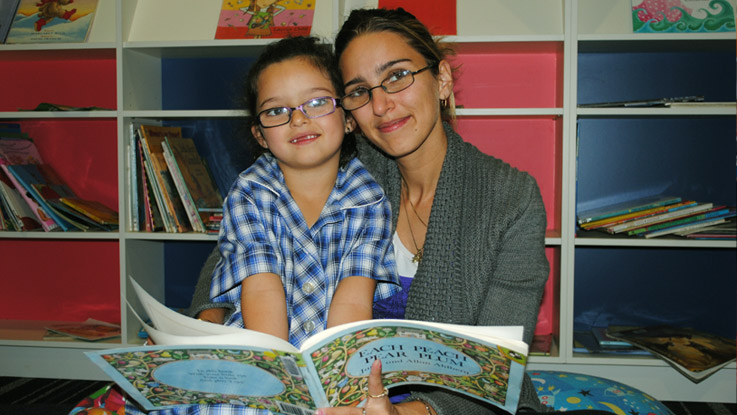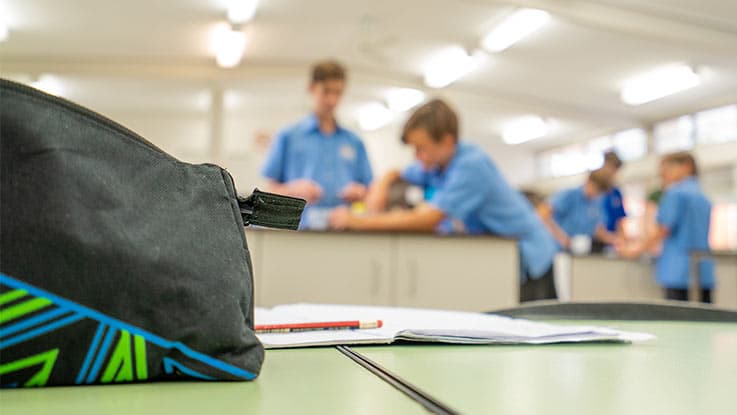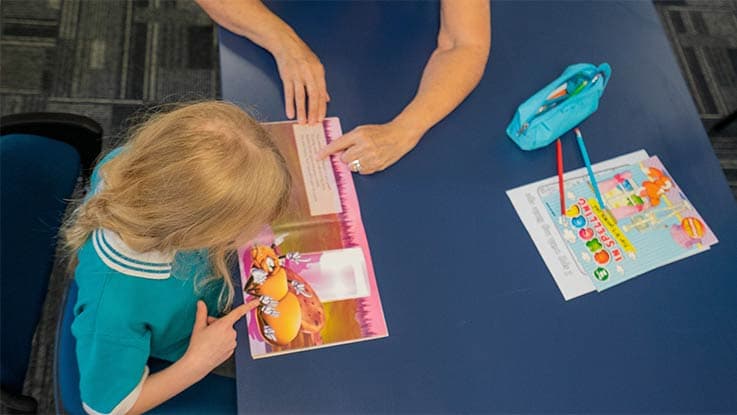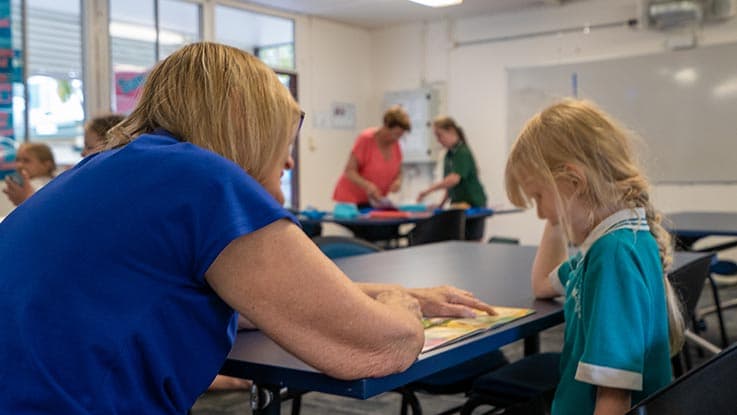
COVID - 19 Insights Snapshot:
Learning experiences during COVID-19 in some of Australia's most disadvantaged communities.
The Smith Family
November 2020
As COVID-19 has unfolded, The Smith Family has been seeking to understand how the pandemic is affecting the lives of the students and families we work with every day.
With extensive networks across 700 Australian schools, and as a national education charity supporting 57,000 students experiencing poverty on our Learning for Life program, we are uniquely placed to provide an inside look at what is happening in some of our nation’s most disadvantaged communities.
We have collated observations drawn directly from families, schools, and our teams on the ground in vulnerable communities, to gain insight into the capacity of children and young people to continue their schoolwork, despite disruption and uncertainty.
A complex picture has unfolded, a mix of anxiety, stress and worry, but also hope, resilience and resourcefulness.
What has school life been like for our students and families in 2020?
We have identified a number of issues of concern impacting the education of our students in 2020. These include:
- A lack of digital access
- Challenges with remote learning
- Significant mental health impacts
- Students at on-going risk of disengaging from their learning
- Significant uncertainty regarding opportunities for further study, training or employment.
- Social isolation
It is likely these challenges will continue to affect students and their families into the beginning of the next school year, particularly in Victoria.

Victoria’s unique experience of the pandemic and extended lockdowns
- This has been especially disruptive and exhausting for families, children and young people living in poverty.
- Increased anxiety and stress has resulted from problems such as a loss of weekly routine, an erosion of the boundaries between school, home and leisure, and a lack of extracurricular activities for students, all of which has had a flow-on effect on students’ mental and physical health.
- Teachers have sought to manage student wellbeing but not without experiencing additional stress themselves.
- Some senior students have told us they felt like giving up during the lockdowns and didn’t see the point of continuing school.
- Other students gave up on remote learning and have told our staff they would only recommence when back in the classroom.
- The risk of disengagement may be higher for families with more limited English language skills, as there are more communication challenges between these families and their schools.
- Daily lesson attendance by some students fell over during this extended lockdown period.
- Many students, including those with learning difficulties and disabilities, have struggled because they don’t have sufficient individualised learning support.
- Some students do not feel they are being extended to their full potential in a virtual classroom.
- Many schools have also had to modify how much they could teach.
- Some students have thrived in remote learning, and may face a social adjustment challenge being back at school in Term 4.
Overall challenges presented by the COVID-19 pandemic and various state and territory lockdowns
States and territories have been impacted in varying ways by COVID-19. Students in states like Victoria have spent significantly longer in remote learning than students in the Northern Territory or Western Australia. However, we anticipate that even those who experienced shorter periods away from school will be impacted.
Dealing with COVID-19 has exacerbated challenging and stressful circumstances for students and their families supported by The Smith Family. The pandemic has added another layer of complexity to already full lives.
An acute risk remains that some students living in disadvantage will fall even further behind because of the disruption to school.- Students living in disadvantage have experienced a number of barriers to home learning, impacting how much schoolwork they have been able to do while learning remotely.
- Dealing with these barriers has impacted the engagement of some students with their schoolwork and this risks negatively affecting their futures.
- One in five of the 57,000 students on our Learning for Life program do not have a home computer with reliable internet access.
- Multiple children often share one device, and struggle with unreliable internet connections.
- Some families have purchased more devices for remote learning, creating a financial burden.
- Families have often lacked digital skills to feel confident in navigating online learning.
- It is acknowledged that student wellbeing is a critical precondition for engaged learning.
- Many schools have been prioritising this and partnering with organisations to deliver food and wellbeing packs to help particularly vulnerable students.
- Many students and their parents or carers are wondering what the next few years will look like for young people on the cusp of completing and leaving school. This is more challenging for students from disadvantaged families, as they tend to have more limited knowledge about the current labour market and far fewer opportunities to explore different post school options, than their more advantaged peers.
- COVID-19 has highlighted the importance of families feeling connected to school and each other throughout the year. Connection to a wider range of supports is particularly important for disadvantaged families.
Compounding challenges for Aboriginal and Torres Strait Islander communities
Families in Aboriginal and Torres Strait Islander communities are experiencing increased health concerns about transmission of the COVID-19 virus.
This concern exists in the context of historical trauma and higher mortality and illness rates among Aboriginal and Torres Strait Islander people.
Lockdown also meant some Aboriginal and Torres Strait Islander students were disconnected from country, from extended family, and from cultural practices for a period of time, which impacted their wellbeing and mental health.

Resilience and strength during the pandemic
- Families are used to overcoming hardship, and in some respects COVID-19 has been treated as one more challenge to get through.
- They have developed methods and strategies to create a regular routine for their children, and been resourceful in maintaining their wellbeing as best they can.
While remote learning has been a mixed experience, some students have learnt how to motivate themselves and complete their schoolwork with more autonomy.
Some schools have been able to strengthen their relationship with the families in their community and have been using different communication tools to stay connected to them.
Despite all that has occurred in 2020 so far, many students retain a positive outlook for 2021.
Even though students know the immediate future is uncertain, they remain hopeful.
Finishing this school year and preparing for 2021

As we approach the end of the school year, we know that further student assistance is likely to be required in Term 4 and beyond. Getting young people back to school and engaged in their learning is vital. Assessing where students are up to in their learning has to be a priority, so targeted support can be arranged for those who need it to get back on track.
Helping students to achieve and to see progress in their learning will also contribute to their wellbeing. The Smith Family’s catch-up learning programs, including after school Learning Clubs, are an essential part of the overall response to supporting our nation’s most vulnerable students to catch up and keep up educationally, with their peers.
There are also some big questions that need to be discussed as a community if we are to be ready for the next school year and able to make up for this year’s disruptions and challenges.
How do we take responsibility for the education and wellbeing of children, together as a community?
The COVID-19 pandemic has crystallised the need for the whole community to work together to tackle issues of equity and disadvantage. In response to challenges posed this year, governments, schools, corporations, philanthropists and the community at large have moved to support vulnerable students. This is a welcome first step, but students experiencing disadvantage will need more support long-term, as the nation builds its recovery.
Families, schools, community organisations and philanthropists all have a role to play in the education of children and young people, and we need to find new opportunities to work together.
Schools are one part of an ecosystem supporting children and young people. This year saw an increased appreciation of the holistic role schools, and those that they partner with, can play in the lives of students, parents and carers. They can be a place where the local community comes together and supports one another.
Schools can’t be expected to respond to COVID-19 alone, particularly in disadvantaged communities. These schools also need suitable support organisations to help students with their wellbeing or catch up learning if they need it. They also need businesses to work with them on the longer term career pathways of the students in their care.

How do we harness new ways of working that support student learning?
Because of COVID-19, schools were forced to switch suddenly to a very different learning schedule and many teachers needed to acquire a range of new skills. Despite very significant challenges, we saw school systems striving to adapt and respond in new ways to the learning needs of their students.
It is essential we look at the learning needs of individual students and work with school communities and others to carry this forward and respond to these needs.
There are likely to be a range of valuable new insights that have been gained from the increased use of online learning during COVID-19 which could be incorporated into student learning.
Schools used different ways to connect with parents/carers and family members during COVID-19, including social media, phone calls and regularly updating their websites. In many instances this year, the relationships between schools and families have been strengthened. This provides an important foundation for the future.
Many parents and grandparents also developed a deeper appreciation for the learning done by their children and grandchildren, including a better understanding of their schoolwork and class routine. This enhanced parental engagement in children’s learning can also contribute to student outcomes.
The ongoing response of The Smith Family
Learning for Life Support
Our families have told us that our long-standing education support program, Learning for Life, has been a crucial source of stability for them throughout this tumultuous period. We will continue to provide students and families with this unique combination of financial, personal and program support now and into the future.
Financial assistance through Learning for Life continues to provide a much-needed supplement to families.
Students on Learning for Life are provided educational support in three main ways and all three elements of this support are critical – and right now during this crisis are needed more than ever.
- Financial support for the educational needs of our students. This can be used for the purchase of anything education related including schoolbooks, stationery, and going towards digital devices and/or internet access.
- A family support co-ordinator who is a Smith Family team member working closely with families to support their children’s educational needs at all times. This is even more crucial at this time.
- Access to educational support programs which help students with their learning, and are delivered in homes – including online mentoring, and literacy and numeracy programs. These relieve the pressure on family members to support learning, and helps deliver structure, even when schools are closed.
Digital Support
While The Smith Family has facilitated digital inclusion for many families over the last 10 years, during COVID-19, we provided 1,200 families with Digital Access Packs to families in need, which included a laptop, internet access and technical support. We also continue to provide internet access through partners such as Optus and its Donate Your Data initiative. Since March we have also trialled a number of our programs online, including Learning Clubs and career support programs such as Work Inspiration, and we will continue to deliver programs in this way.
We also note that one in five of the 57,000 students on our Learning for Life program don’t have a computer at home with access to reliable internet, and until this is addressed with an all-of-community response, digital access will remain a significant challenge for these young Australians.



